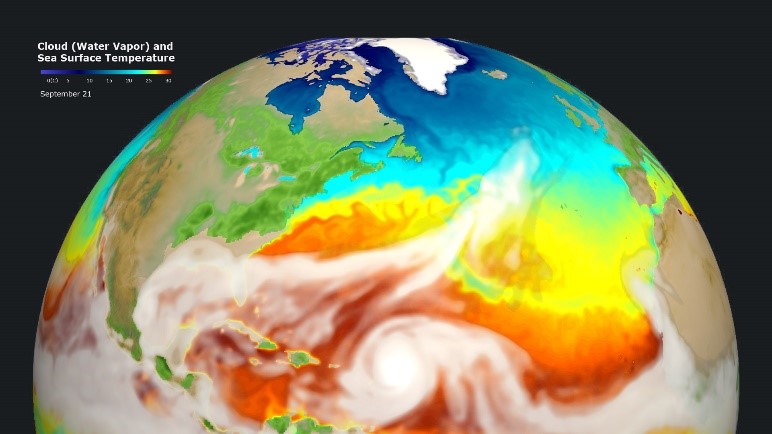How to Fit a Planet Inside a Computer: Developing the Energy Exascale Earth System Model
Published: 20 August 2018

The Earth was apparently losing water.
L. Ruby Leung, a scientist from the U.S. Department of Energy’s (DOE) Pacific Northwest National Laboratory in Washington state, and her team were baffled by their results. “We were seeing the sea level decreasing at an alarming rate.”
Fortunately, Leung and her team were only looking at a virtual Earth. They quickly realized there were errors in the earth system computer model they were developing. Scientists use these computer programs to visualize the present and see into the future, and they need to come as close as possible to modeling how Earth’s systems function in real life. Because the real Earth cycles water but never loses it, neither should the model.
Identifying the problem was simple. Fixing it wasn’t. There are hundreds of variables in the model that could affect its water cycle. Pinpointing the exact one and changing it without creating another inaccuracy can take hours or days of work. In this instance, the model wasn’t sending all the water runoff fluxes from the land into the ocean. In addition, the atmospheric model was losing a very tiny amount of water at each time step, which added up quite a lot. To fix the problem, Leung and colleagues changed the model to conserve water.
Solving this problem was just one of the many challenges the team faced as they developed DOE’s new software: the Energy Exascale Earth System Model (E3SM). By representing many of Earth’s systems and interactions in greater detail than ever before, they hope to help scientists better understand our planet today and in the future.
The E3SM project involves more than 100 scientists and engineers at multiple DOE national laboratories and universities, along with DOE programmatic contributions and collaborations, including the Atmospheric Radiation Measurement (ARM) user facility.
The ARM Climate Research Facility is a DOE Office of Science user facility. The ARM Facility is operated by nine DOE national laboratories.
Keep up with the Atmospheric Observer
Updates on ARM news, events, and opportunities delivered to your inbox
ARM User Profile
ARM welcomes users from all institutions and nations. A free ARM user account is needed to access ARM data.


















